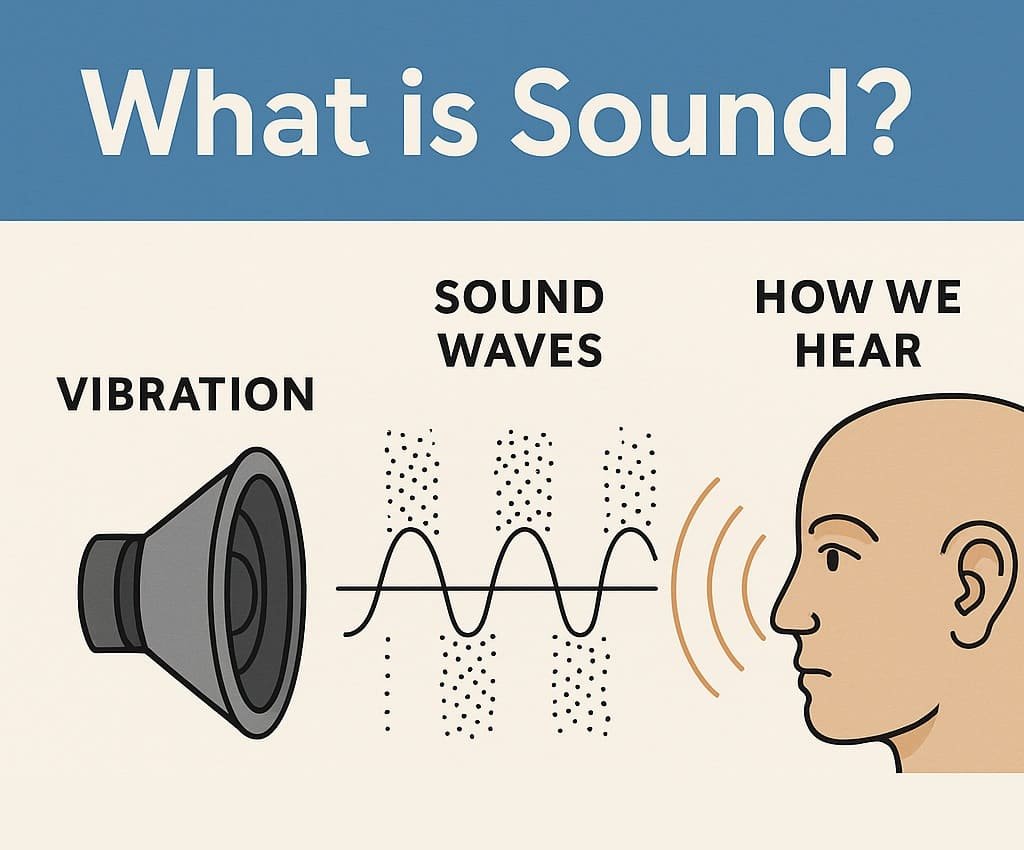
Sound is all around us—whether it's music in your headphones, the chirping of birds at dawn, or a friend’s voice during a conversation. But what exactly is sound, and how does it work? Despite its familiarity, the science behind sound is fascinating and rooted in physics, involving vibrations, waves, and energy transfer. In this article, we’ll explore the fundamental science behind sound in a clear and professional, yet human-friendly way.
At its core, sound is a type of mechanical wave that travels through a medium (like air, water, or solids) as a vibration of particles. Unlike light, which can travel through a vacuum, sound needs a physical medium to move from one place to another.
In simpler terms:
Sound is what happens when something vibrates, and those vibrations travel through the air (or another medium) to your ears.
Sound begins with vibration. When an object moves back and forth rapidly—like a guitar string or a speaker cone—it pushes against the particles in the surrounding medium.
These vibrations create pressure waves. In air, for example, particles bump into each other, passing along the vibration. This chain reaction is what forms a sound wave.
When the sound wave reaches your ears, it vibrates the eardrum. These vibrations are then converted into electrical signals by the inner ear and sent to the brain. The brain interprets these signals as sound.
Sound travels in the form of longitudinal waves, meaning the particles in the medium move back and forth in the same direction the wave is moving.
Key characteristics of sound waves include:
| Medium | Speed of Sound (Approx.) |
|---|---|
| Air (room temp) | 343 m/s |
| Water | 1,480 m/s |
| Steel | 5,960 m/s |
Sound travels faster in denser and more elastic media because particles are closer together and can transmit vibrations more efficiently.
From communication to entertainment, safety alarms to navigation, sound plays a vital role in our daily activities. Musicians use the physics of sound to tune instruments, engineers design better acoustics for buildings, and doctors use sound waves in ultrasound imaging. Understanding sound deepens our appreciation of these fields and helps us interact with the world more meaningfully.
Sound is more than just noise—it's a complex, physical phenomenon that reveals the motion and energy around us. From the thump of a heartbeat to the roar of a jet engine, sound connects us to our environment in ways we often take for granted. By understanding the science of sound, we begin to hear the world not just with our ears, but with a greater sense of curiosity and wonder.
Q1. What is sound in simple terms?
Sound is the vibration of particles in a medium like air or water that creates waves, which our ears interpret as audible signals.
Q2. Can sound travel in a vacuum?
No, sound needs a medium (like air or water) to travel. In a vacuum, there are no particles to carry vibrations, so sound cannot propagate.
Q3. What determines the pitch of a sound?
The pitch of a sound depends on its frequency. Higher frequencies produce higher-pitched sounds, while lower frequencies produce deeper tones.
Q4. How do we hear sound?
Qound waves enter the ear, vibrate the eardrum, and are converted by the inner ear into electrical signals sent to the brain, which interprets them as sound.
Q5. Why does sound travel faster in solids?
Sound travels faster in solids because particles are packed closely together, allowing vibrations to transfer more efficiently from one particle to another.
Image Credits: Created by ChatGPT with DALL·E, OpenAI
Comments